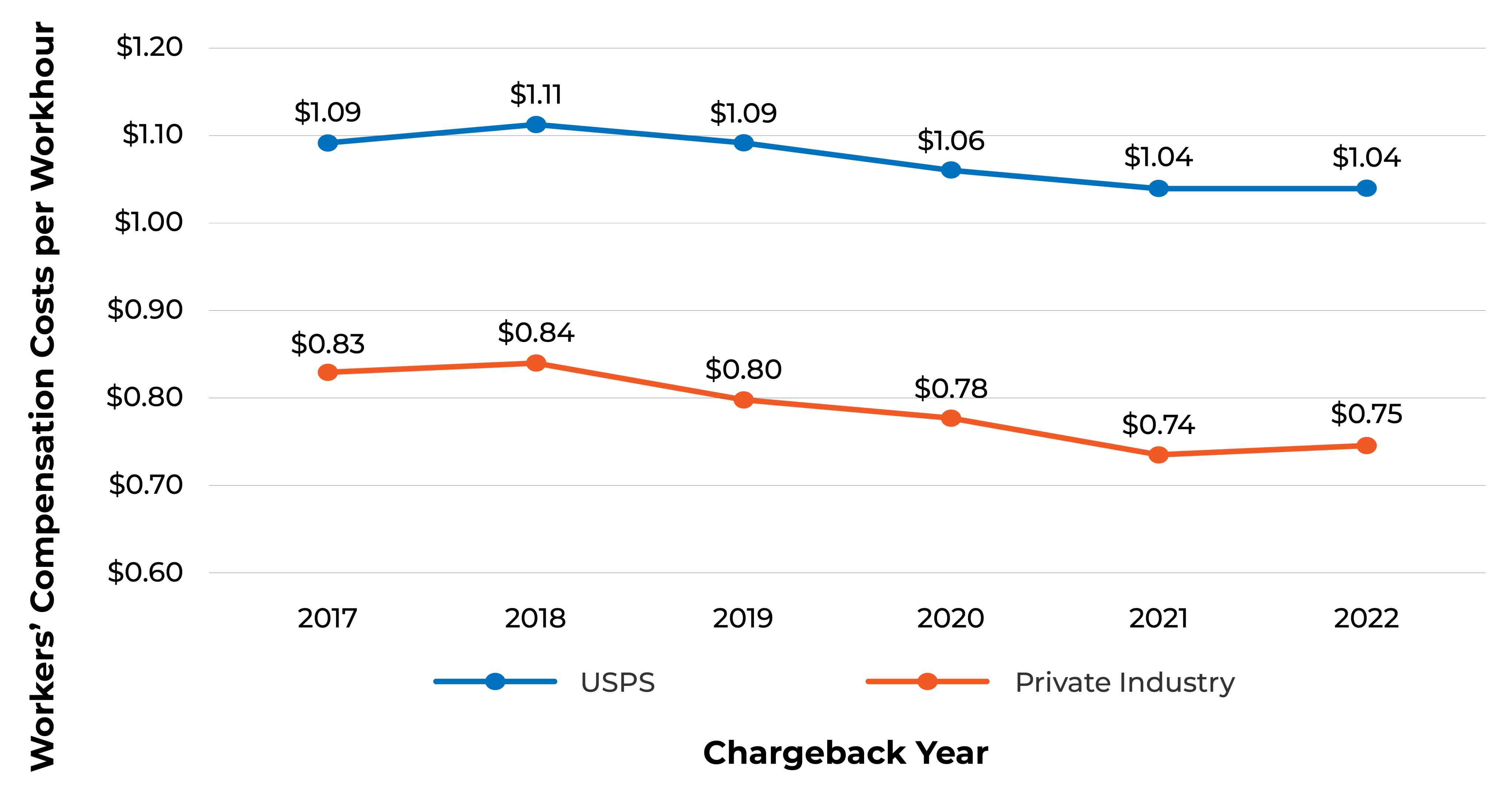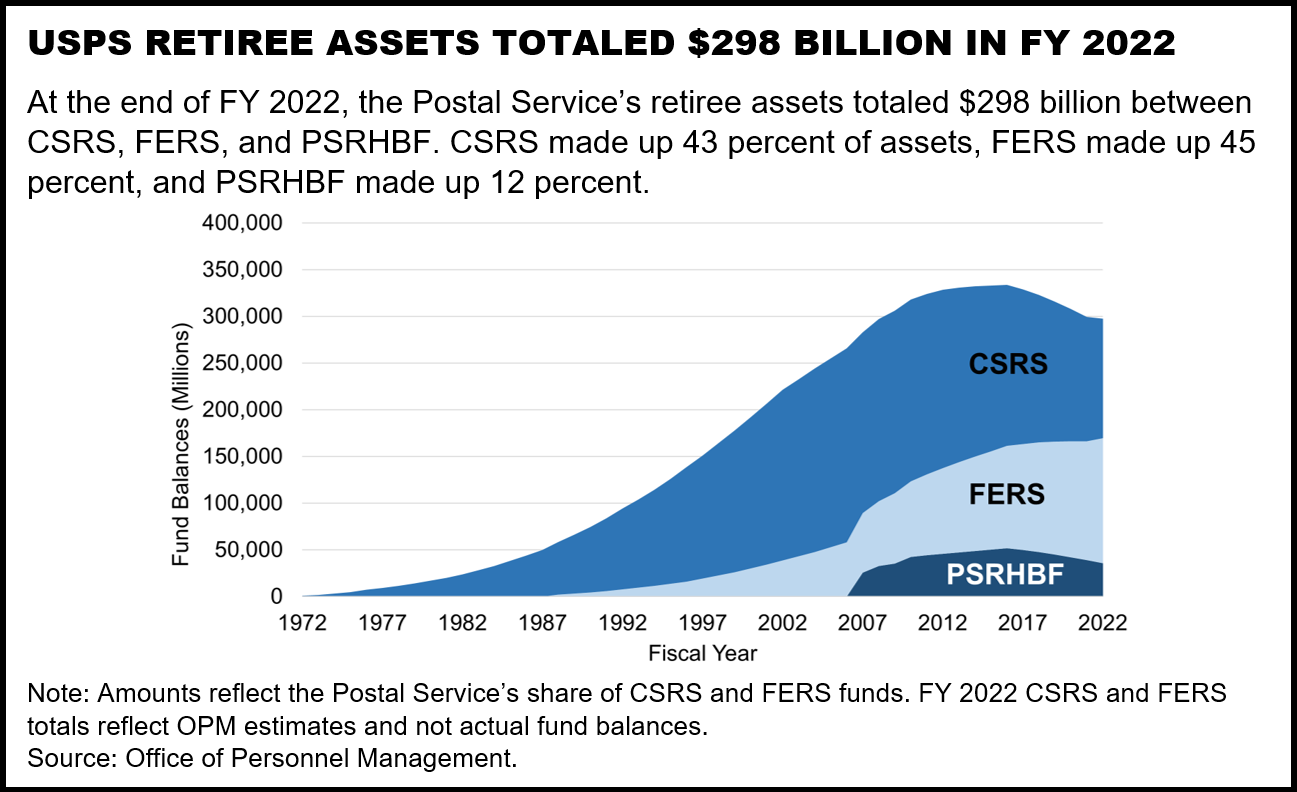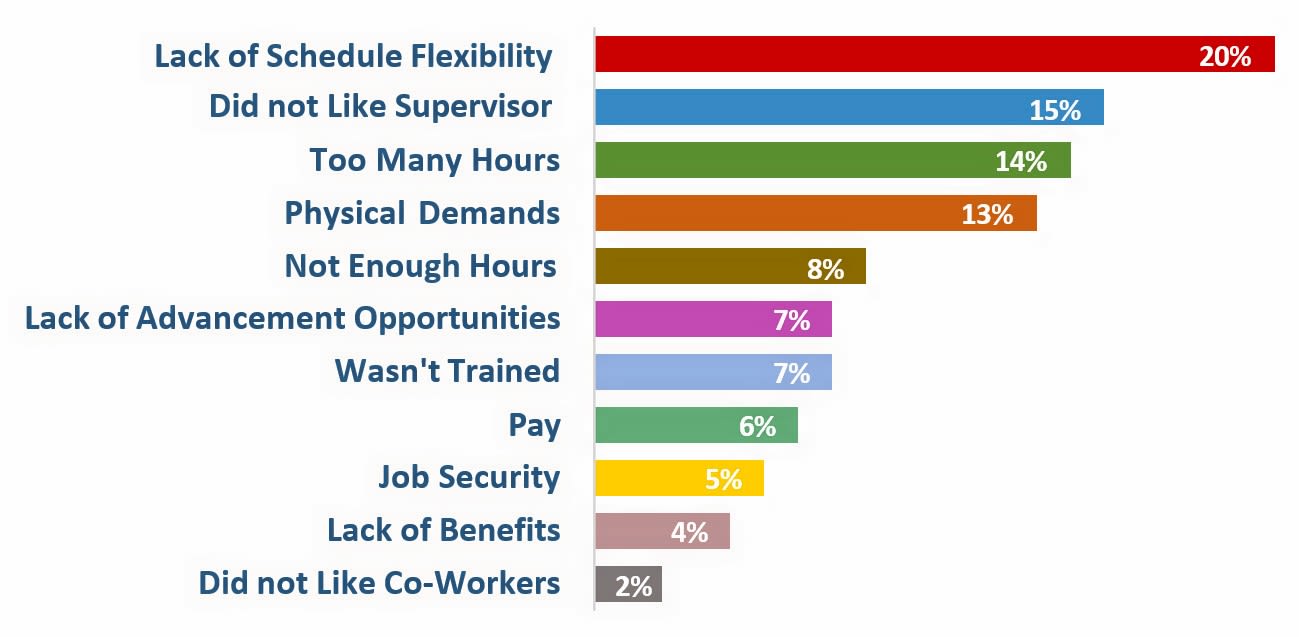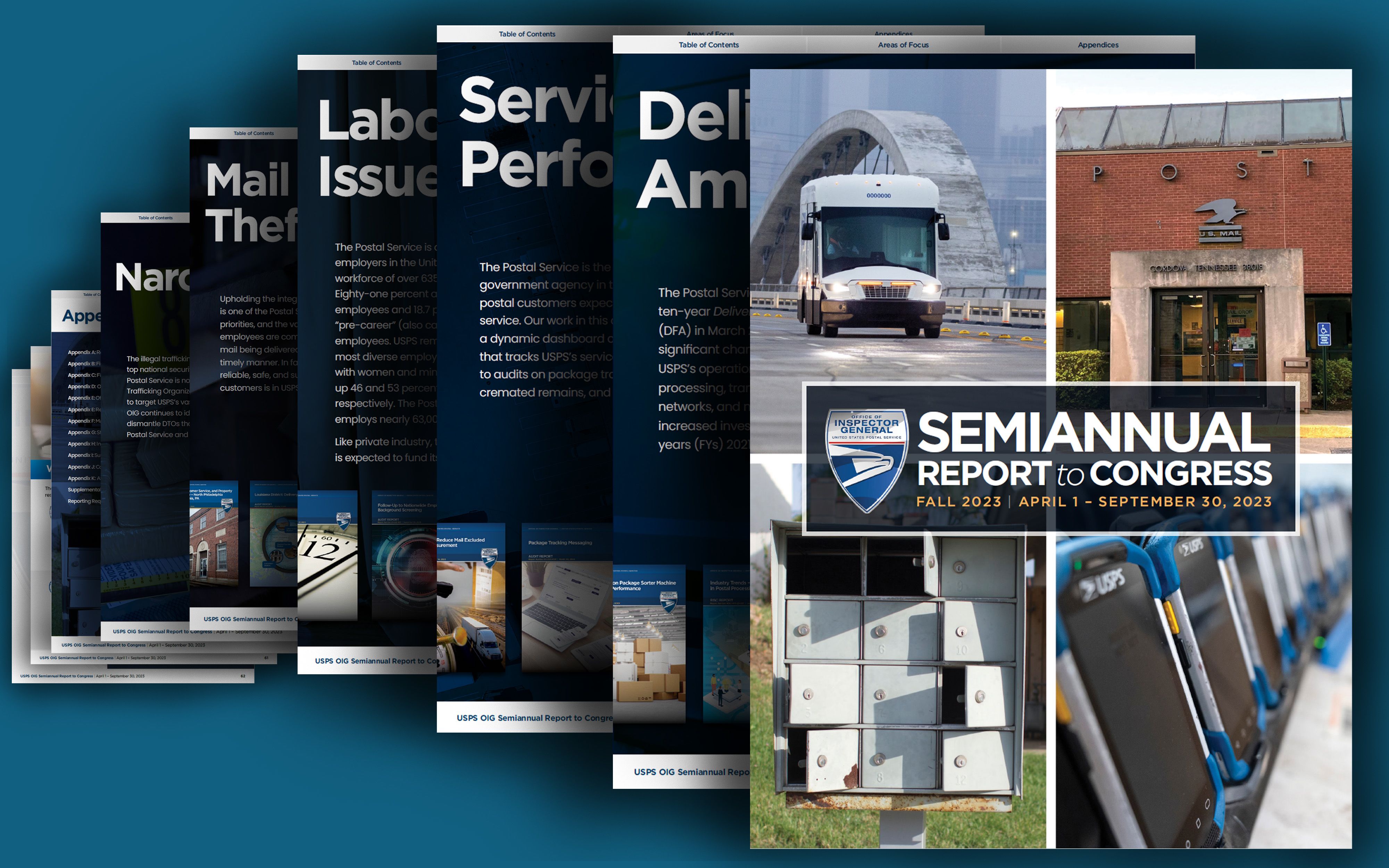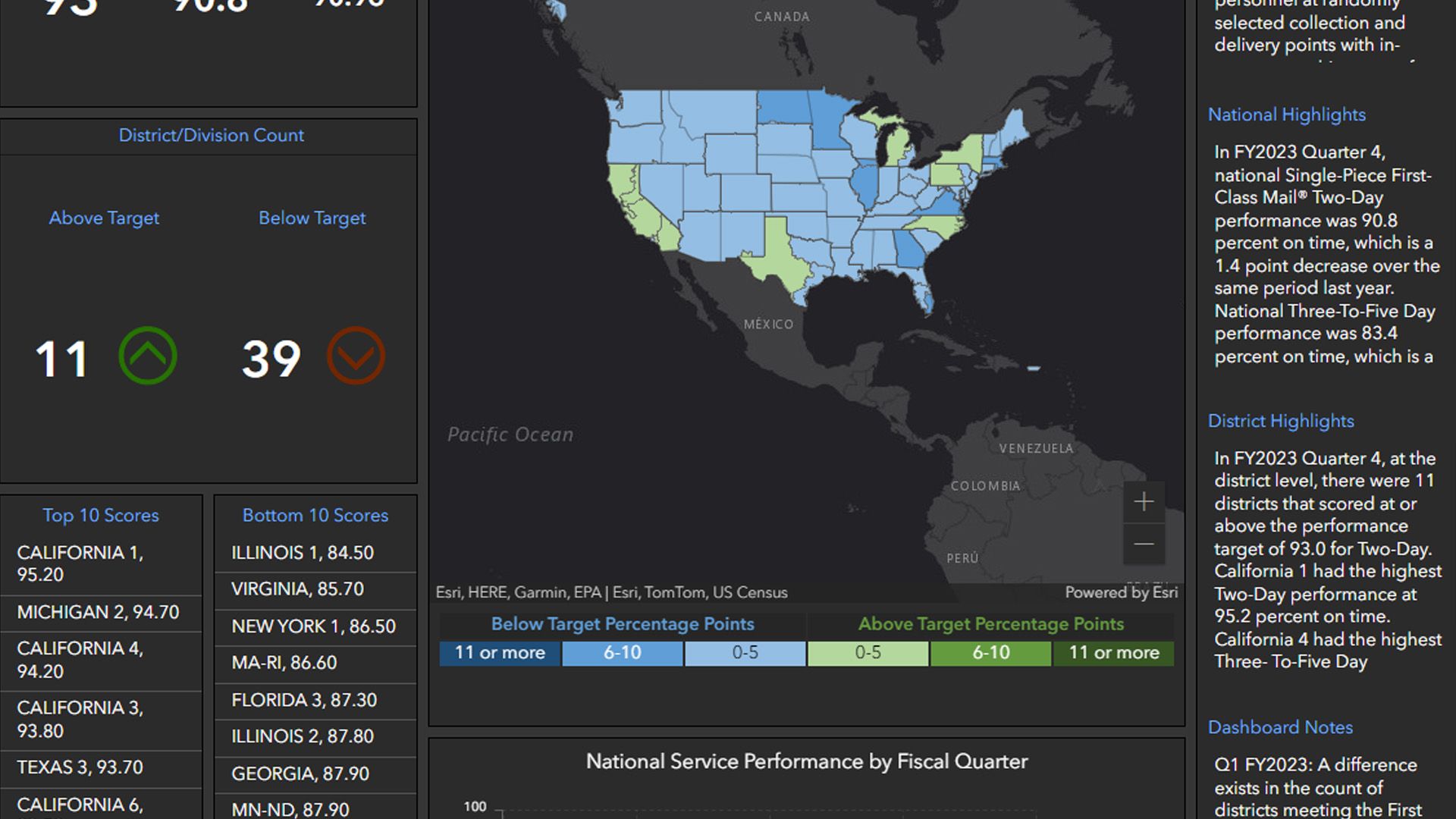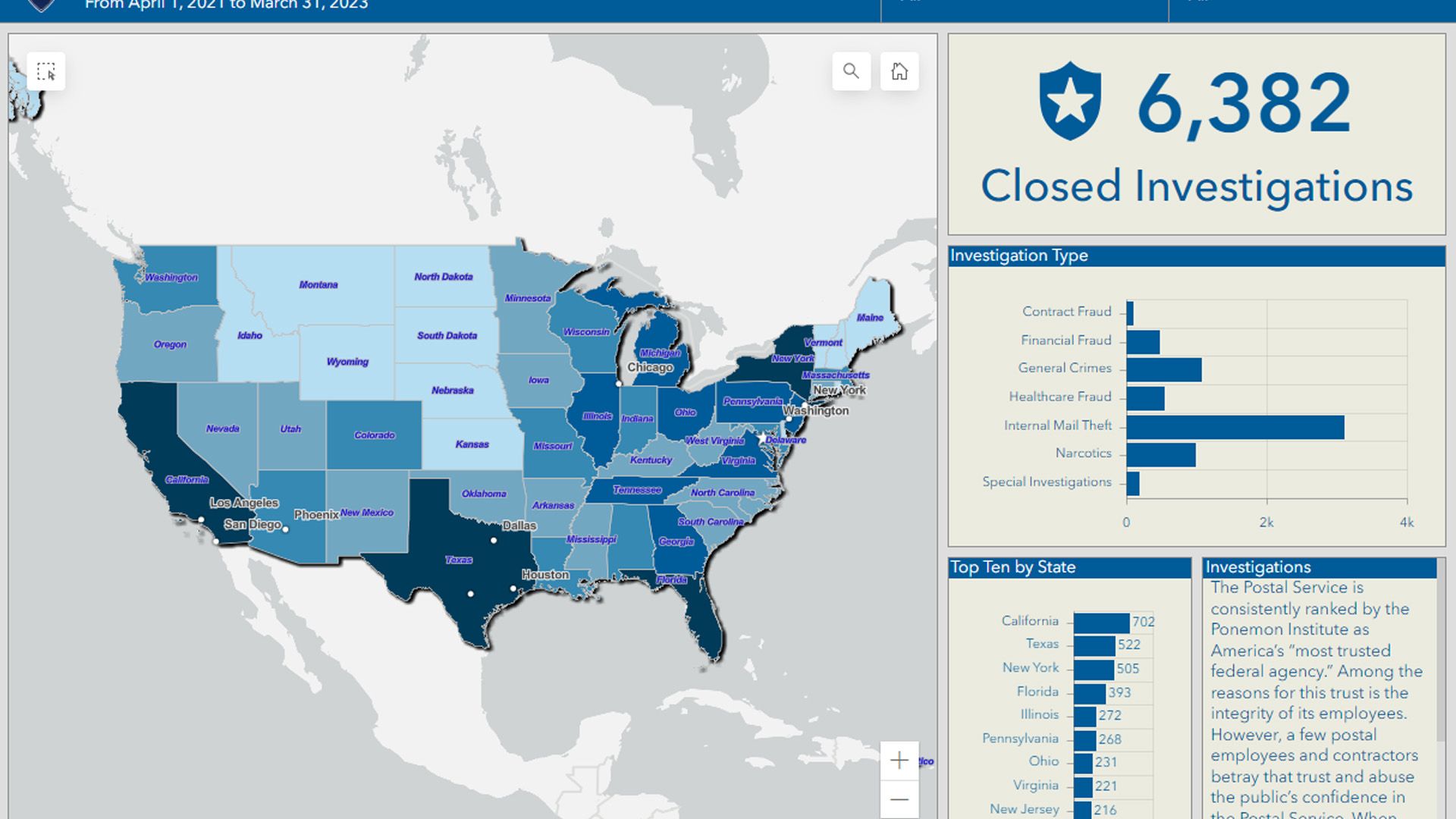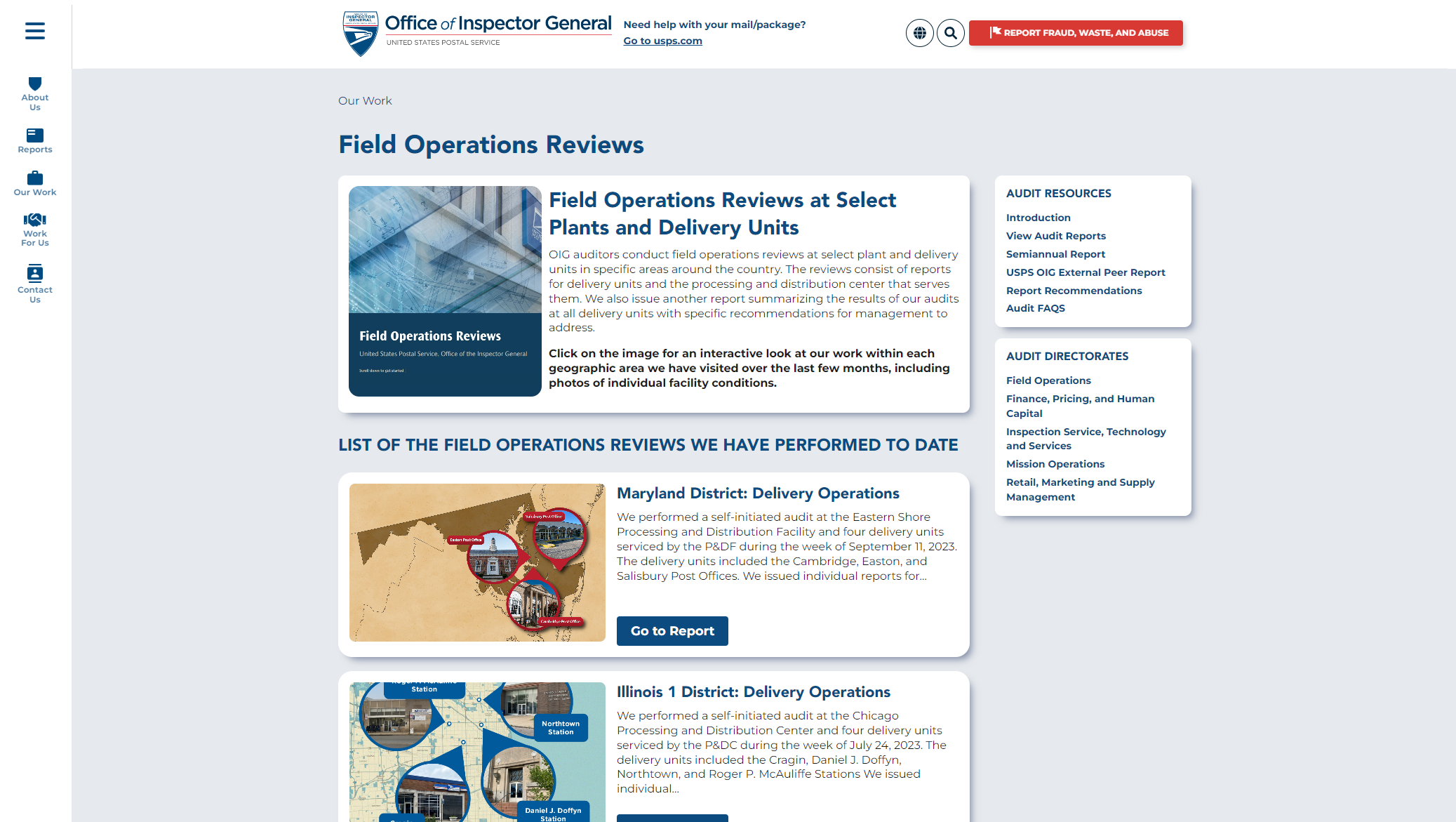An Interactive Recap of the
Fall Semiannual
Report to Congress
April 1 — September 30, 2023


Our Work
While there is only one of us for every 645 postal employees, at the U.S. Postal Service Office of Inspector General, we’re charged with an important mission: ensuring the efficiency, accountability, and integrity of the United States Postal Service. And as of October 2022, we also provide oversight to the Postal Regulatory Commission (PRC).
Our work plays an important role in maintaining the integrity of America’s postal system, its revenue and assets, and its over 635,000 employees.
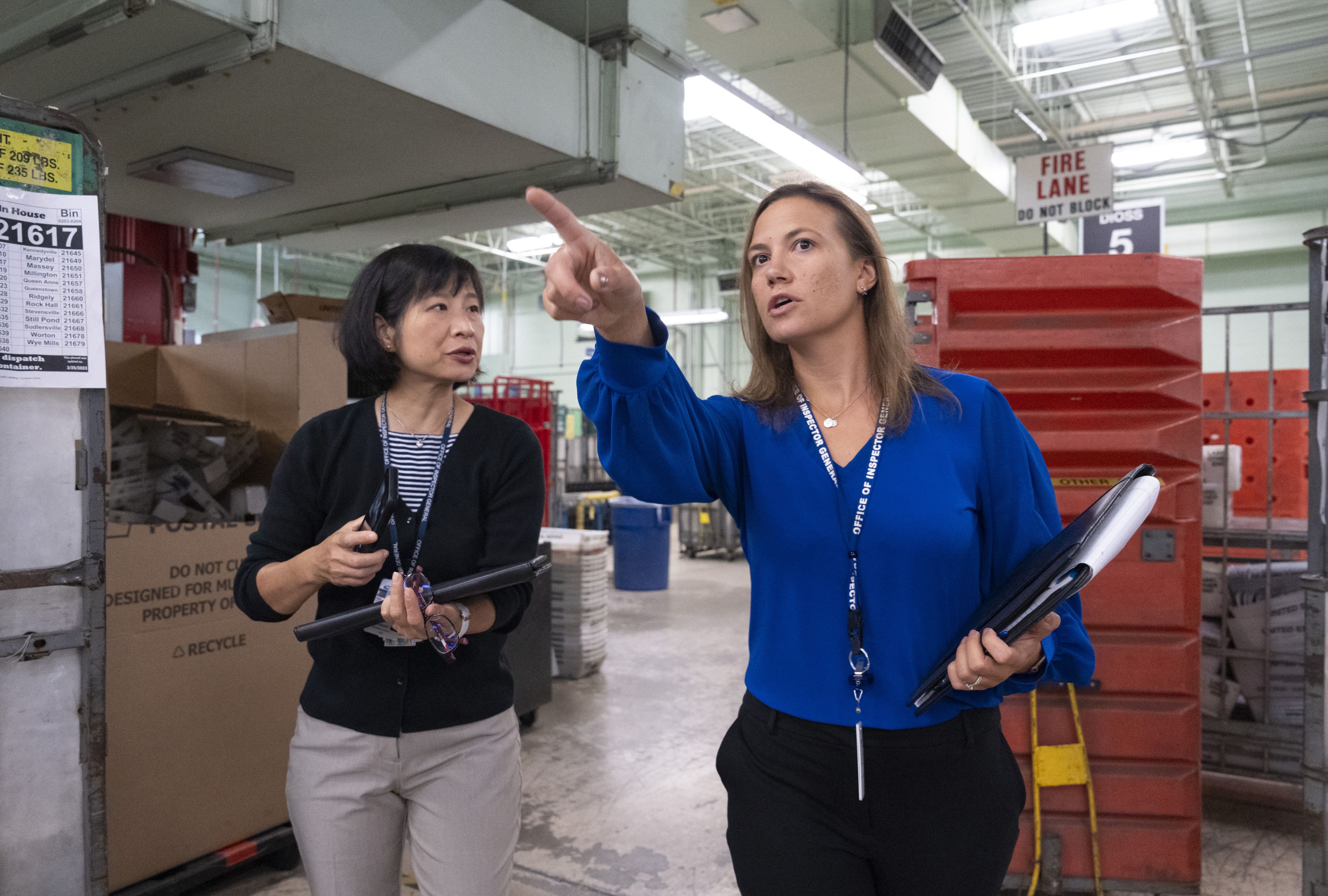
In the past six months alone, we completed 1,772 investigations, made 310 arrests, and secured 345 indictments. Our special agents’ work resulted in more than $94 million returned to the Postal Service, nearly $233 million in cost avoidance, and over $384 million in fines, restitution, and recoveries.

During this period, we issued 87 audit reports and white papers and made 206 recommendations to postal management and the PRC. This work identified more than $952 million in questioned costs for USPS and over $39 million in funds put to better use.
The following summary captures the five main areas of our work featured in our 2023 Fall Semiannual Report to Congress.

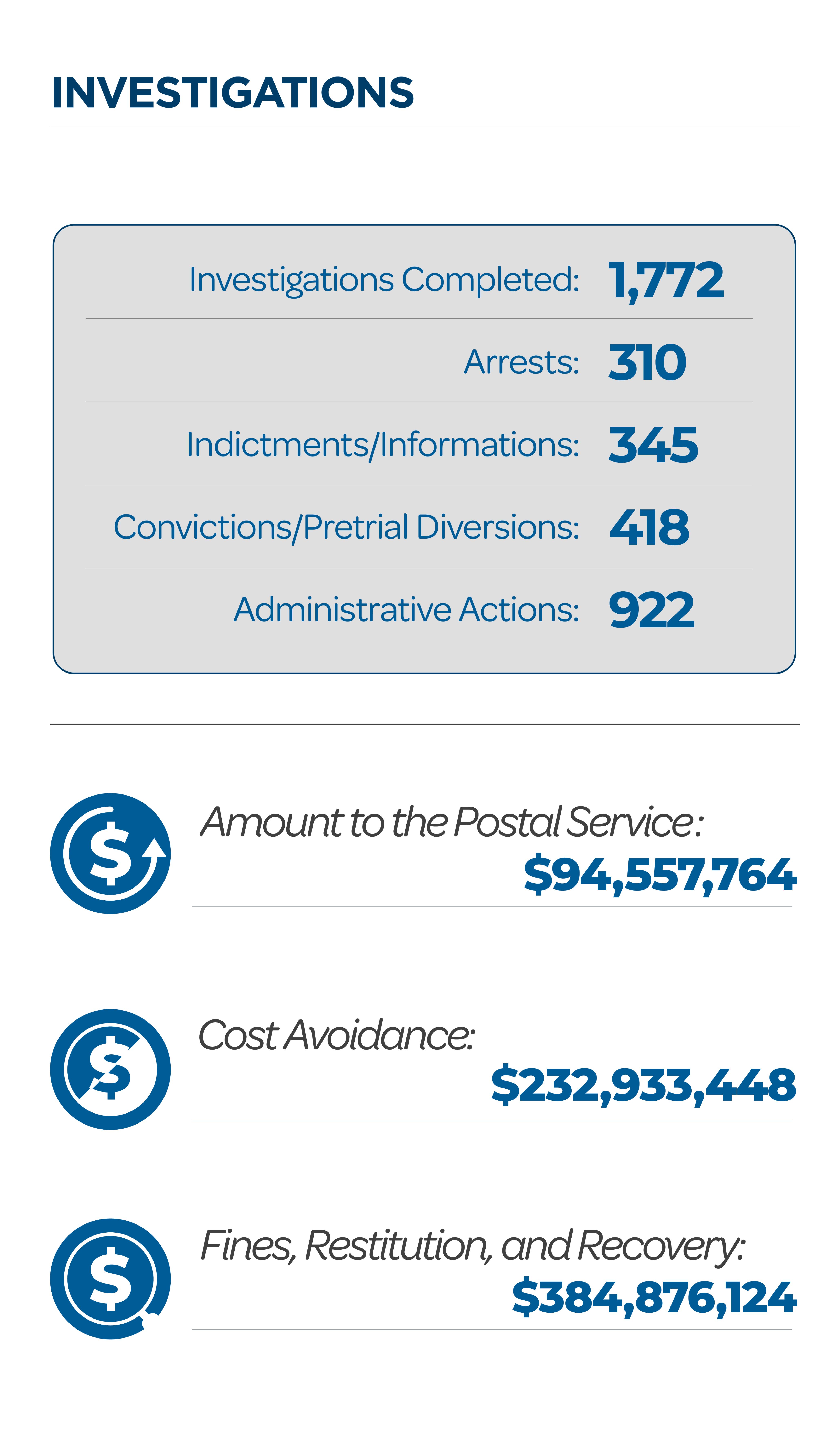
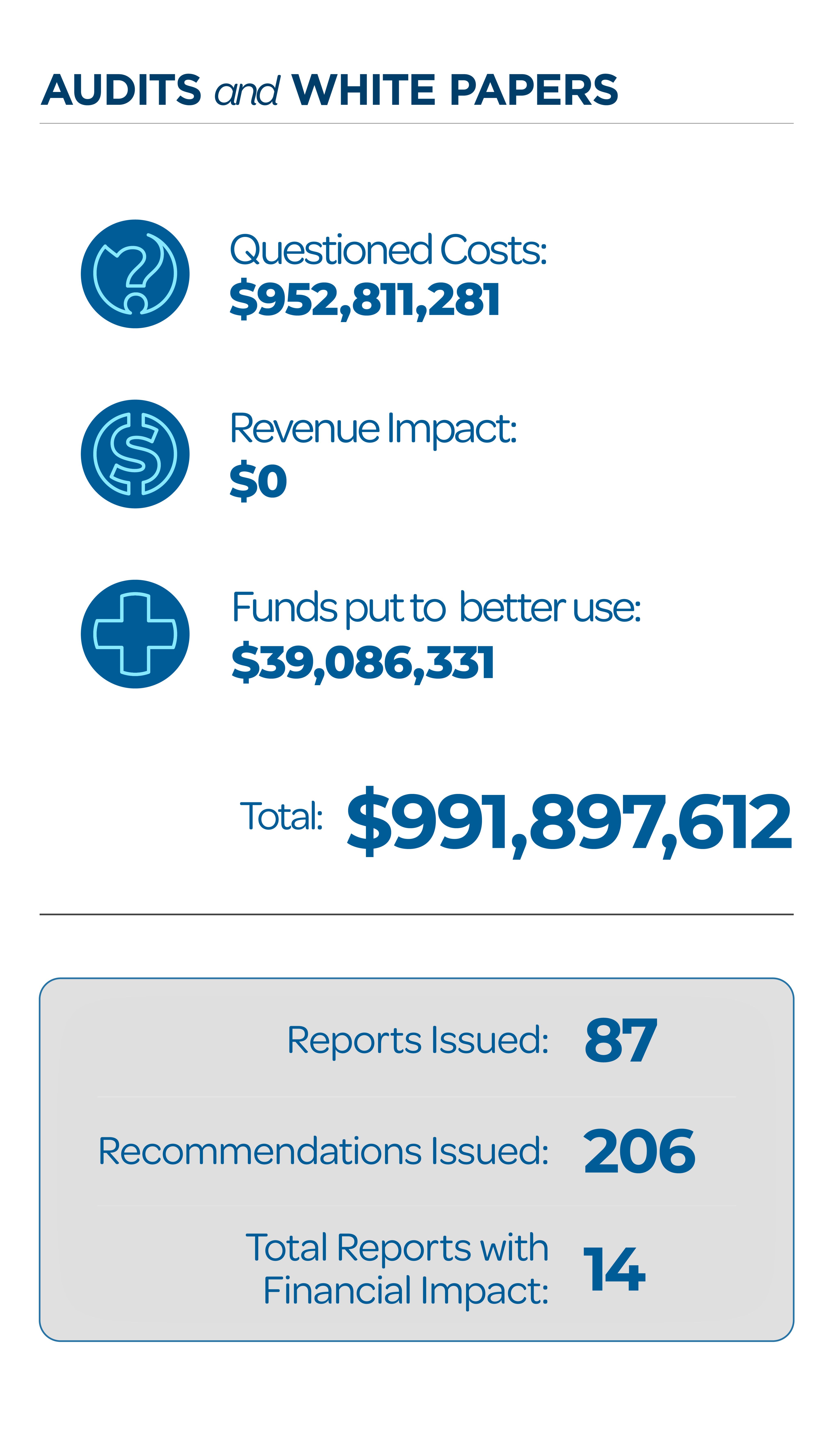
Delivering for America

In 2021, the Postal Service unveiled its 10-year Delivering for America Plan (DFA), which outlines significant changes to its operations and delivery networks. Our work focused on four areas of the DFA, starting with USPS’s plans to invest more than $40 billion in equipment and infrastructure during the 10-year period. Our auditors looked at how the Postal Service estimates and monitors the return on investment on its capital projects, and our researchers identified industry best practices USPS can use to invest in its processing operations.
The creation of about 400 new delivery facilities called Sorting and Delivery Centers (S&DCs) promises to provide faster, more reliable delivery over larger geographic areas. Our auditors examined how the first six S&DC and first parcel distribution center rollouts went and identified lessons to carry into the future.
The Postal Service’s acquisition of new package processing equipment wasn’t just part of the DFA — it also came in response to higher shipping demands during the COVID-19 pandemic. Our teams looked at future acquisition plans but also ways to optimize USPS’s use of its newly acquired equipment, with which postal management agreed.
Finally, we highlighted two DFA priorities: the Postal Service’s commitment to environmental sustainability and its acquisition of Next Generation Delivery Vehicles (NGDVs). Our work in this area helped USPS better adhere to requirements under the National Environmental Policy Act as it pursues the acquisition of NGDVs. We also identified sustainability-promoting trends USPS can adopt from the postal and logistics industry.

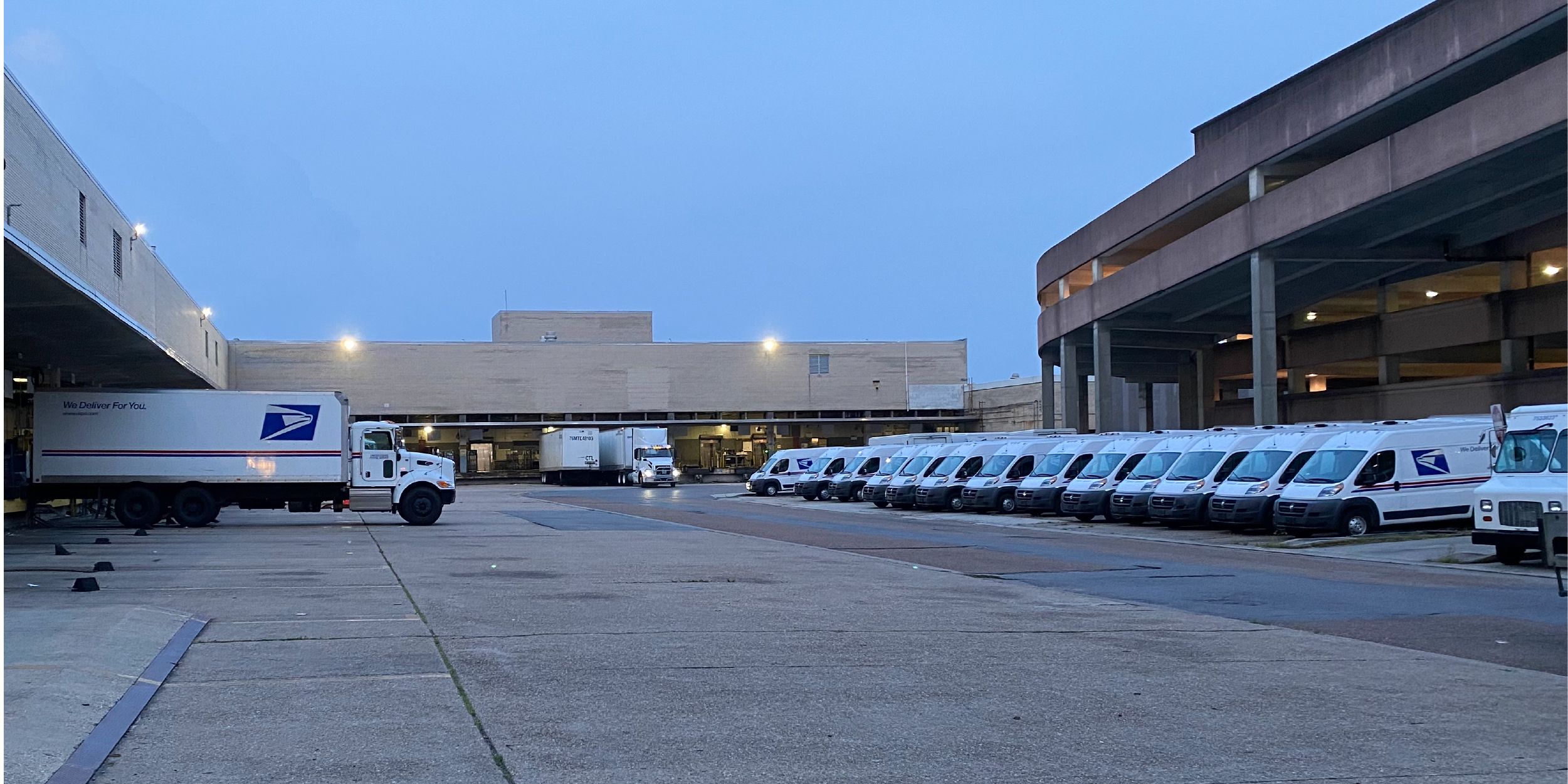
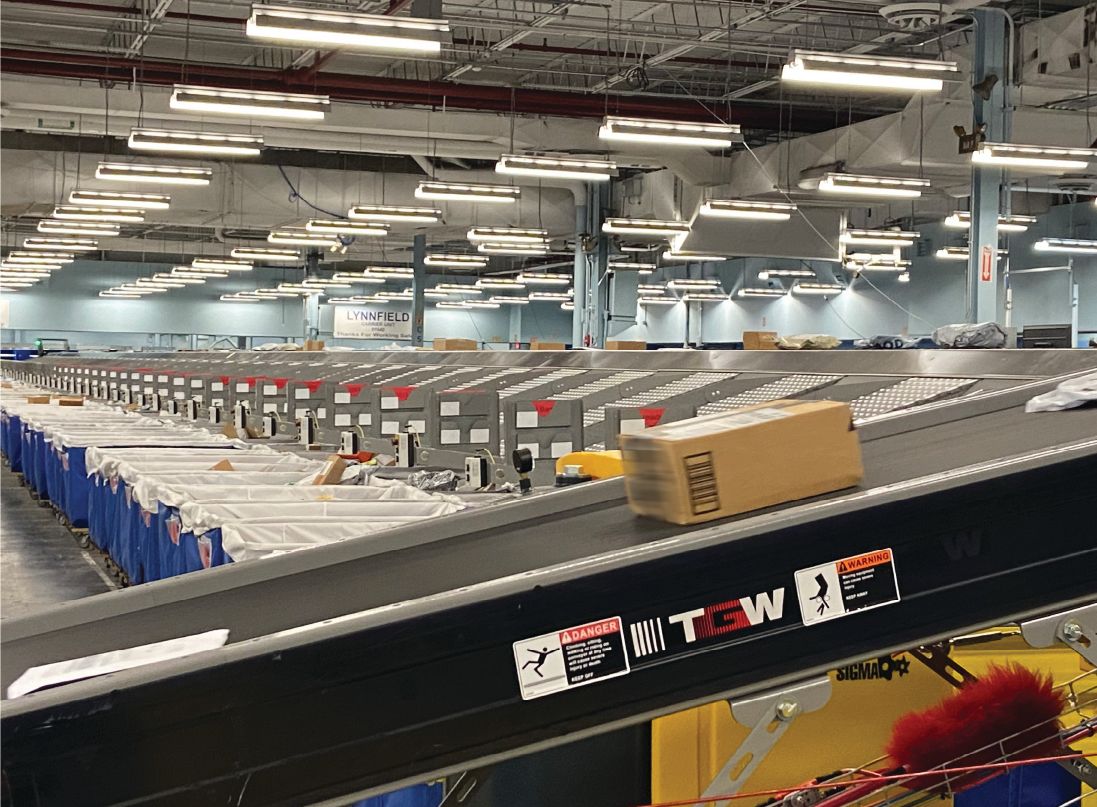
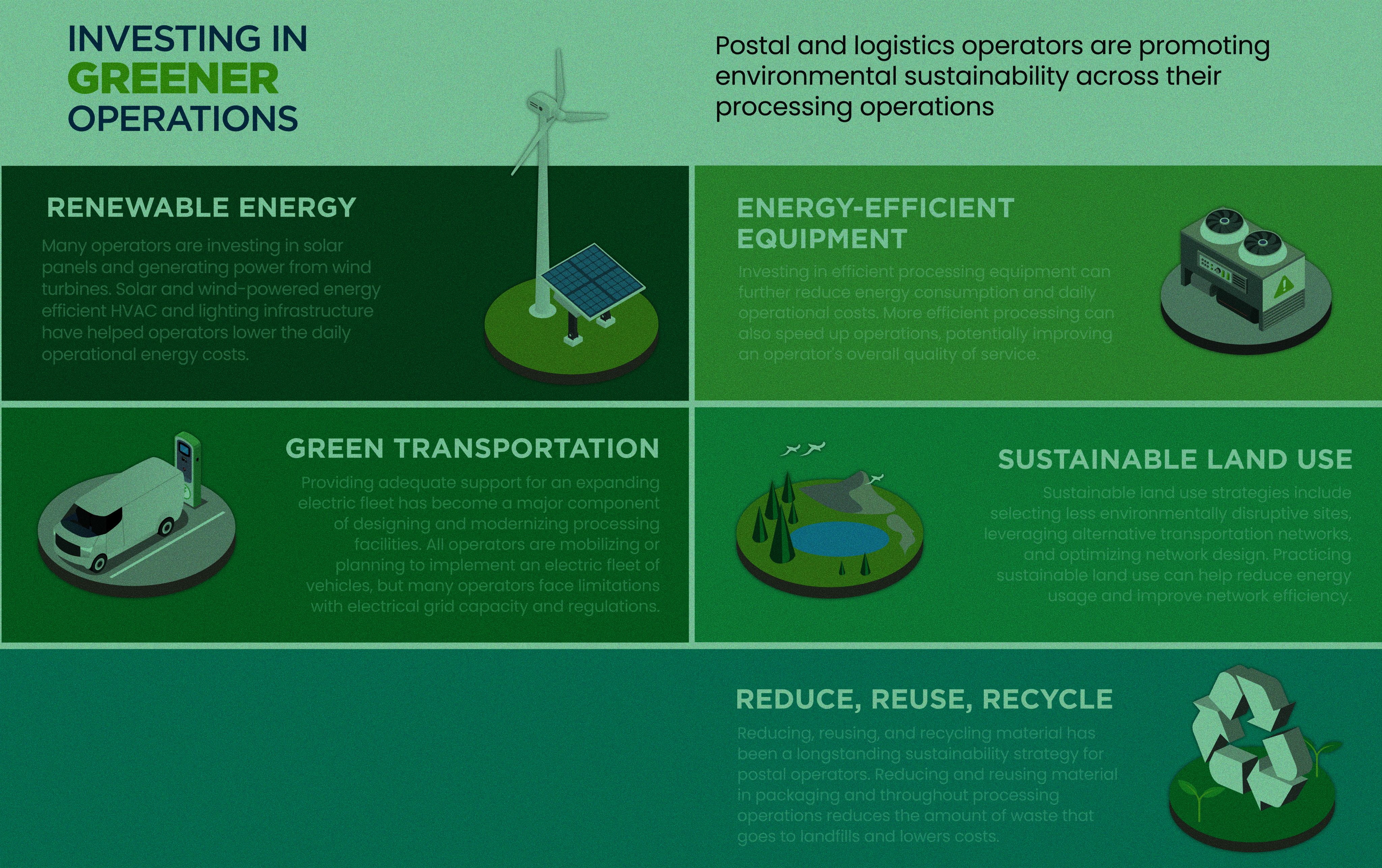
Service Performance

To appreciate the scope of the Postal Service’s network and operations, consider it’s the only delivery service that touches every single household in America. Its size notwithstanding, USPS continues to be one of the most highly rated government agencies in the country, and our work plays a key role to help prevent and address service performance issues.
We’d like to highlight three audits that had significant stakeholder interest: one that evaluated the handling of cremated remains and two others that examined the Postal Service’s tracking and messaging services. All three identified deficiencies in postal processes and procedures. Seeing that cremated remains are some of the most priceless shipments that move through USPS’s network, we made six recommendations to postal management; however, management only agreed with three. As for improving the Postal Service’s messaging for tracking packages through the mailflow, management did agree with all our recommendations.
A newer yet vital cornerstone of our work on service performance has taken the form of our Field Operations Reviews, where teams perform “cluster” audits at postal facilities within a given geographical area. These reviews have been prompted by congressional interest and postal customer feedback and have helped uncover systemic issues ranging from delayed mail to deficient property conditions, to issues with arrow key security — USPS’s proprietary keys that open blue collection boxes and Cluster Box Units, such as those found in apartment buildings.
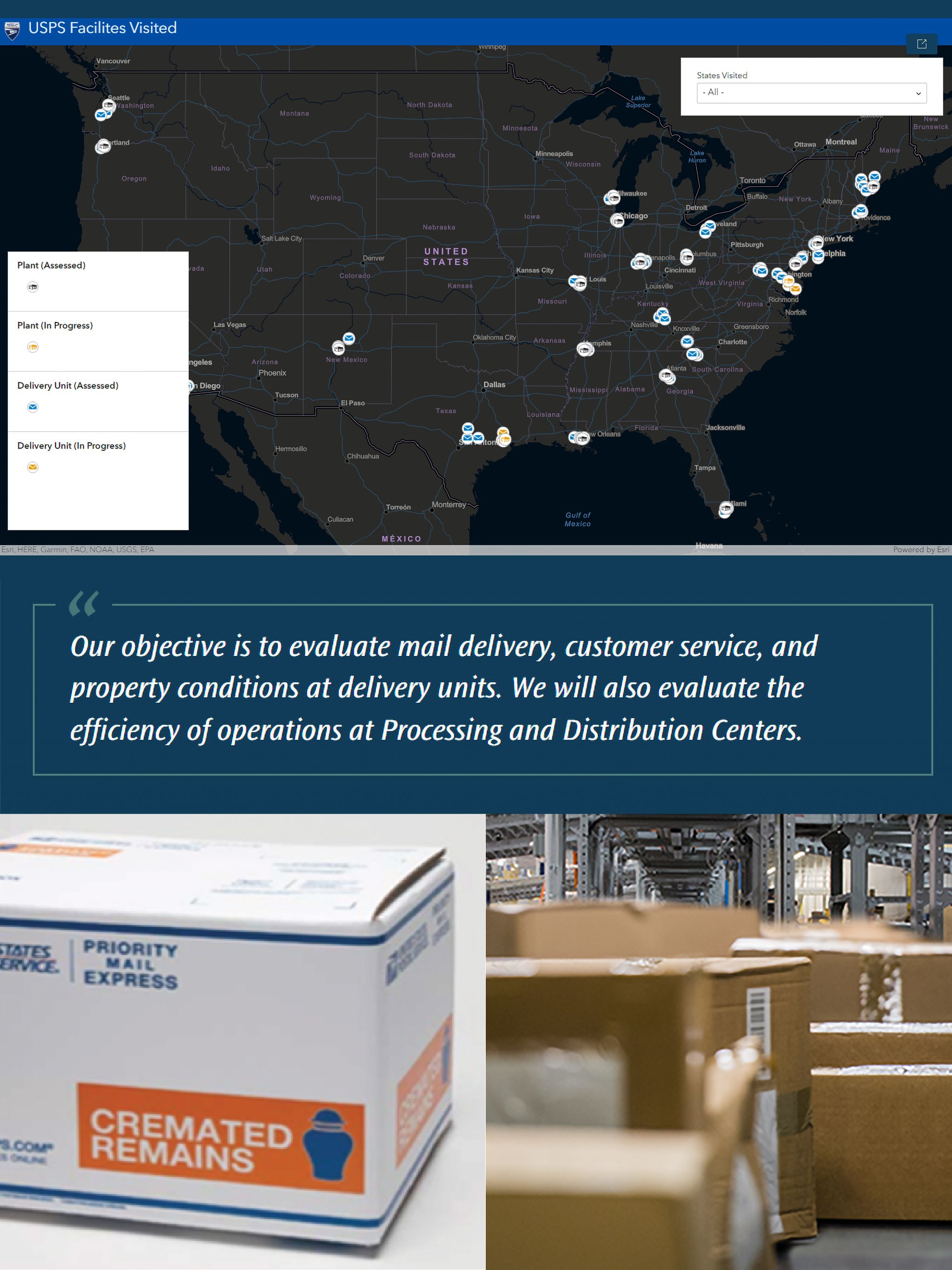
Labor Issues

With one of the largest workforces in the nation, the Postal Service faces unique challenges that other government or private sector entities don’t. While USPS is expected to fund its operations through revenue just like the private sector, it faces unique constraints around its labor rules and regulations.
Our auditors did a thorough comparison of one labor issue — workers’ compensation — that elucidates these differences and translates into USPS’s workers’ compensation cost per workhour being 31 to 41 percent higher compared to private industry. The takeaway? Bigger savings would require legislative changes: had USPS been allowed to adopt private industry practices, it could have saved nearly $700 million over the past two charge-back years.
Postal Service and Private Industry Workers’ Compensation Cost per Workhour between CBY 2017 and CBY 2022
Postal Service and Private Industry Workers’ Compensation Cost per Workhour between CBY 2017 and CBY 2022
Similarly, one of our most eye-opening white papers painted an entirely different scenario for USPS’s retiree funds. Had the Postal Service been able to invest its retirement funds differently than it has under the current laws, it would have $1.2 trillion in retirement assets instead of the $298 billion it had at the end of FY 2022. Legislative changes would also be required to make this papers’ findings a reality.
Our semiannual report also highlighted three ongoing labor issues USPS faces: high turnover of its “pre-career” or temporary employees, staffing challenges at postal facilities, and issues with overtime management. Finally, following an expert panel event held this September, our researchers will release a report next year on how the current labor market is affecting the Postal Service.
Non-career Exit Survey Results. Source: WORKFORCE Planning, Insights, and Analytics and OIG analysis.
Non-career Exit Survey Results. Source: WORKFORCE Planning, Insights, and Analytics and OIG analysis.




Mail Theft

As incidences of mail theft rise across the nation, our work in this area has taken precedence on both the investigative and auditing fronts.
Our special agents have been investigating 836 cases of mail theft during the past six months...
...that have led to 191 arrests...
...236 criminal convictions...
...and nearly $3 million in fines, restitution, and recoveries.
Similarly, our Field Operations Reviews uncovered issues with arrow key security that, if left unchecked, can enable thieves to break into blue collection boxes and Cluster Box Units
Our auditors also evaluated USPS’s response to mail theft, identifying areas it and the Postal Inspection Service can improve to deter this federal crime.
However, postal management only agreed with three of our seven recommendations on this topic.
Narcotics

Finally, Drug Trafficking Organizations (DTOs) are increasingly looking to exploit USPS’s vast delivery network to transport and distribute narcotics within and across state lines. In response to this, we created the Narcotics Strike Force program in 2021, which focuses on investigating postal employees or contractors who conspire with DTOs. Since the program’s launch, 16 OIG special agents have opened 192 cases in seven states that identified 318 trafficking subjects, of which 142 were postal employees. However, a lack in funding will eliminate the 16 specialized positions and negatively affect our ability to bring these criminals to justice.
An example of our narcotics work involved two postal employees who helped three external drug traffickers deliver parcels containing over 200,000 fentanyl pills and two kilograms of cocaine. The two mail carriers were removed from the Postal Service and convicted to two and nearly three years in prison and terms of supervised release. The other three co-conspirators were sentenced to a combined total of 41 years in prison and 13 years’ supervised release.
Our investigative work provides USPS and the American public a great and vital service. To bring attention to it, we launched a new section of our website this year that highlights recently closed investigations. We recommend checking it out.
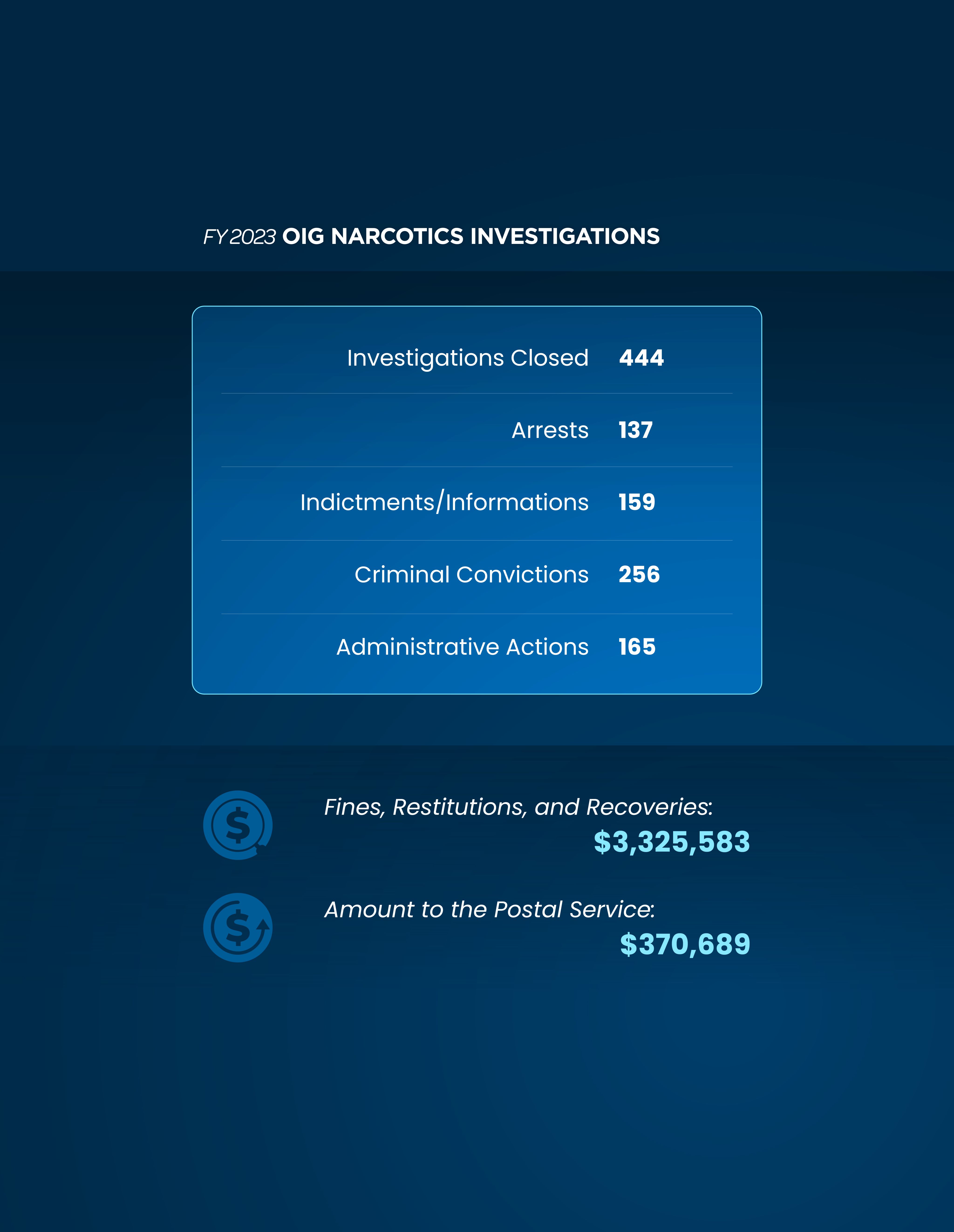
Our Semiannual Report
Having covered these five areas in brief, we invite you to read our 2023 Fall Semiannual Report to Congress. You’ll find a more detailed, yet still high-level analysis of each of these areas, their impact on the Postal Service, and how our work can help USPS navigate the changes and challenges ahead.
Click the image above to see our full report.
Click the image above to see our full report.
Contact Us
For media inquiries, please email press@uspsoig.gov.









